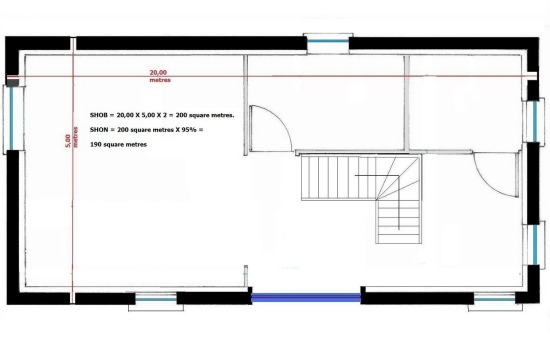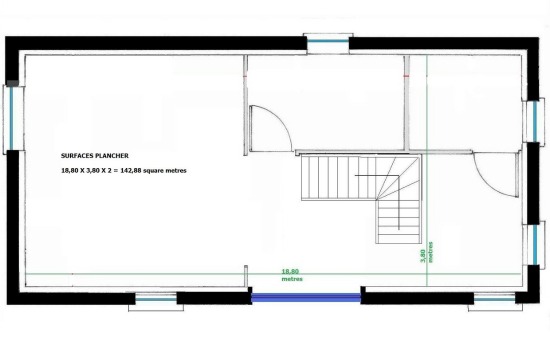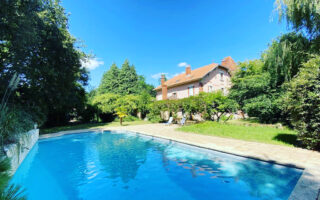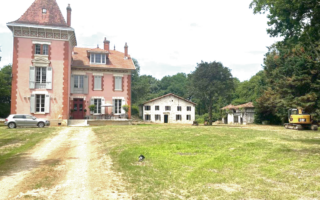Building in France: Calculating the Habitable Space of a French Property
Essential Reading

Many French planning permission documents require that you calculate the ‘habitable space’, but how do you calculate this in France? There are two main calculations when it comes to planning in France: the ‘Surface de Plancher’ which is essentially the ‘habitable space’ and the ‘Emprise au Sol’ which is the footprint at ground level of the building (including covered terraces and balconies). Here are the official guidelines for both.
What is the ‘Surfaces de plancher’ for a French Building?
New regulations regarding habitable surfaces have been implemented on March 1st, 2012. Surfaces de plancher is the new way of working out habitable space and replaces SHOB and SHON. The gross floor area (SHOB) and the net floor area (SHON), which have been used for over four decades, have become complex and not really representative of the habitable space of buildings or homes. The French Government has decided, after wide consultation, to substitute a single concept – surfaces de plancher.
This is understood as “all floor surfaces of buildings closed and covered, included under a ceiling with a height exceeding 1.80m”.
The new floor area does not include exterior wall thickness and aims to contribute to the goal of improving the energy performance of buildings by allowing thicker insulation.
Indeed, the inclusion of external walls in the calculation of floor area has encouraged applicants to opt for thinner walls to maximize the building’s size in terms of floor area at the expense of the insulation.
How to Calculate the ‘Surfaces de plancher’
The floor area includes all floor surfaces of buildings closed and covered, included under a ceiling, with a height greater than 1.80m measured to the internal surfaces of external walls. This surface is calculated from the bare inside, which excludes insulation from the inside or outside buildings.
As before, parking areas, basements or cellars and attics are, under certain conditions, excluded from the calculation of the surface.
For new build projects, the obvious benefit is the increase in useable floor area, as the surfaces de plancher is, in effect, living space.
In terms of renovation and conversion, there are wider implications. The new concept of surfaces de plancher means that by removing the wall and insulation thickness from these calculations, greater actual floor area can be measured. Projects of renovation and conversion may become more viable.
Just for information I have provided an example for the calculations for a barn of 20m X 5m on two levels (only the ground floor plan is used). The first example shows the sums used for the SHOB/SHON number and the second the surfaces de plancher model. No deductions are made for any of the allowable deductions of garage spaces, etc to avoid confusion.
I have used a wall thickness of 50cms (not an un-common occurrence) and 10cms for wall insulation and plasterboard. This gives a 0.60m reduction from each wall. I think the sums speak for themselves. As an exercise, I recalculated for my barn conversion and it is a fact that if I could have applied the surfaces de plancher model at the time, I would not have needed an architect to approve my plans.
See below for an illustration of the difference between the old and new systems.
SHOB/SHON: (old system)

Surfaces de plancher
How to Calculate the Emprise de Sol or Footprint of a French Property
Along with the changes to the definition of floor areas from SHOB and SHON to the new definition of Surfaces Plancher, another means of measurement was included. This being the concept of the “Emprise de Sol”.
The emprise de sol has been revised to complement the surfaces plancher rules. The latter do not apply to areas that are not enclosed or covered as in (verandas, terraces) or even parking spaces (garages carports). These areas could not be used to determine what form of planning approval is required. Or contribute to the revised level of 150m², at which compulsory French registered Architect was required. To maintain a level of control over the planning regime the emprise de sol can now be used to dictate not only what type of planning authorization is required, but also dictates that over the 150m², a French registered architect must be used to approve the application.
An amendment published in May 2012 (decret No 2012-677 07/05/2012) changed the original rule making only the elements that constitute surfaces plancher need be included in the emprise de sol figure for the architect required figure of 150m².
As a concept, it already existed as part of the planning rules and used to determine the allowable sizes of extension of a building as a percentage of existing structures. All of this has now changed.
In the legislation it is defined as “L’emprise au sol correspond a une projection verticale du volume d’une construction, tous debords et surplombs inclus.” This translates roughly as : the footprint corresponds to a vertical projection of the volume of a building, eaves and overhangs included.
This is the simple definition. In reality, the range and scope of things that add to the emprise de sol can be quite daunting and advice must be sought to see how the individuals situation dictate what does and does not form a constituent of the calculations for their project. To measure the footprint, the eaves and overhangs should be taken into account except elements such as moldings, bands and simple cornices and roof overhangs, without support posts or cantilever.
Contrary to the floor area, the footprint of the building includes the thickness of exterior walls (siding and insulation materials included). For example, a ramp outside of the house is part of the footprint. It is the same regarding the basin of a pool (indoor or not, or not covered). In contrast, an outdoor parking area not covered is not. Regarding patios, floor level terracing, if no element exceeds the ground level, or it is impossible to achieve a vertical projection. The area of a terrace of a single-storey does not, therefore, account for determining what type of authorization is submitted. The terraces which, though not strictly above the ground level, have neither an elevation significant in relation to land or deep foundations can also be considered as not constituting footprint.
In Conclusion:
If you are considering a project of renovation or conversion of this type of building and you are looking to submit a plan for approval in the near future, do the sums. An accurate calculation might just save you a tidy sum in architects fees.
Building or Renovating Your French Property?
Whether you’re building an extension, renovating an old farmhouse, or designing a new build property, FrenchEntrée is here to help! Check out our Essential Reading articles for everything you need to know about planning permissions, building regulations, and renovation projects. Or, for professional help, advice and assistance at all stages of your building or renovation project, head over to our directory.
Share to: Facebook Twitter LinkedIn Email



